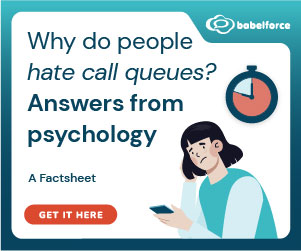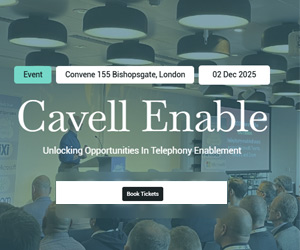Whether we like it or not, racism is all around us and happens daily. Contact centres are no different. It’s everyone’s responsibility, everyone’s problem and everyone has a role to play in ensuring society and contact centres become anti-racist.
This article is an appeal for everyone to reflect, take ownership and, whatever role you are in, to drive action to move your contact centre to being anti-racist.
Racism comes in many forms, it’s not just verbal racism.
Processes, policies, and systems within your contact centre can be racist. This can include your recruitment process, your succession plans, how you coach and train, your annual leave allocation. These are just a few examples.
- Does Christmas leave have a higher priority than Eid?
- Do you have the right mechanisms in place to deal with racism from customers towards your advisors?
- Dealing with racism from customers – do advisors know what they can do when this happens? Do you follow up with the customer?
- Do you send the call recording to the police?
Four Steps to Develop an Anti-Racist Contact Centre
It’s not easy and making a start can sometimes feel overwhelming. To help with this, I’ve developed a structured 4-step model to support your contact centre to become anti-racist:
Step 1 – Create Awareness
This is about ensuring everyone has the information to clearly understand the different forms of racism, their impact and why it’s important to become anti-racist. This step helps create urgency, focus and understanding of what being anti-racist looks and feels like.
Developing awareness can be achieved through storytelling, scenarios, or training to ensure you build a common understanding of why being anti-racist is important.
Practical Tips to Create Awareness:
- Set up a diversity & inclusion working group – across different roles and teams
- Develop an anti-racism training programme, including learning about different types of racism, such as micro-aggressions
- Have an anti-racism module in your new starter onboarding programme
Step 2 – Develop Reporting Processes
This is all about data. It’s critical that a reporting process exists and for it to be easy for advisors to report any racist incidents. This reporting process enables people to safely flag that a racist incident has occurred, which can enable the relevant proactive support to be offered in real time.
The reporting provides the contact centre with valuable data, detailing the types and regularity of racist incidents. And because contacts are recorded through calls, emails, or webchat it enables organizations to investigate the perpetrator of the racist incident.
Practical Tips to Develop Effective Reporting Processes:
- Create an easy reporting mechanism to flag racist incidents. Ensure that as part of this reporting process a manager, HR or anti-racism lead is notified immediately
- Ensure the team are briefed and understand how to report racist incidents, and why it’s important they do so
- Within the mechanism have an option for suggesting improvements to support the anti-racism agenda
Step 3 – Build Support Options
This step goes hand in hand with step 2, as if you have no support systems in place, this will undermine the reporting process, as people will start to question the value of reporting.
It’s critical to have designed support options for anyone who has encountered racism, either verbally or through a process, policy, or way of working.
This aftercare needs to be flexible depending on the person and how severe the incident was; no one size fits all. However, brushing an incident under the carpet as something that happens just won’t cut it.
This support could be a quick chat, extended break, reinforcing your commitment to tacking the issue, making an immediate policy/process improvement, or offering employee assistance support with professionals.
Practical Tips for Building Support Options:
- Ensure everyone is clear on the different support options that are available. Many existing initiatives can be in the shadows, so ensure things like the employee assistance programme is well advertised and easily accessible
- Equip your managers with knowledge and tools to help them support their team and tackle racism. These situations and conversations can be difficult, especially if they have never experienced racism before
- Talk to team members who have faced racism, and ask them what support they’d like to see
- Have a mechanism and the capacity to implement improvements that can support your contact centre becoming anti-racist
Step 4 – Develop a Learning and Action-Orientated Culture
Becoming anti-racist is a continued development that needs constant and consistent focus. A big part of this is having a learning culture, where everyone is responsible and actively involved in suggesting and implementing improvements.
This takes courageous leadership that means hard self-reflection on how your service currently operates, ownership over the situation and accountability on driving positive change. The learning culture can allow every team member to reflect on their actions and how they can personally become anti-racist.
No point just listening and learning, there needs to be tangible action that makes a difference. Track and understand the impact.
Practical Tips for Developing a Learning Culture:
- Log, share and commit to improvements
- Make it easy and safe for people to suggest improvements, and empower them to lead or be part of the improvement implementation
- Share success stories to keep momentum
- Make it a regular agenda item in team meetings
Example Activities That Can Support Your Contact Centre to Become Anti-Racist:
1. Ensure Your Recruitment Is Inclusive
We all know that contact centres are also part-time recruiters! It’s a service that naturally has a high attrition compared to other services and therefore lots of recruitment and onboarding occurs.
This creates an opportunity for contact centres to review their recruitment process. The way their job adverts are worded, the application process, the shortlisting process (make sure it doesn’t enable one person to assess someone based on their name, address or even accent), the interview (make it diverse and objective), and assessments all have the potential to be racist if the right focus, review, and mechanisms aren’t put in place.
2. Create an Anti-Racism Policy
It’s likely you’ll already have an organization-wide policy on this. However, it’s worth developing a more local specific policy around dealing with abusive customers or colleagues, specifically outlining how your contact centre responds to racism.
What should you do if faced with racist abuse when supporting a customer?
- Inform the customer that racist abuse will not be tolerated – have a prepared sentence which states that yourself and the organization does not tolerate racism, and set out what will happen next
- Depending on the severity of the abuse, close the conversation; if the advisor feel within the context that the call can carry on, then this should be allowed
- Reach out to a colleague and/or line manager to inform them that racist abuse has occurred
- Add notes to the customer record and flag the record to warn future colleagues
- Ensure a clear process is developed for warning and banning abusive customers
If the contact centre is serious about zero tolerance, then a warning or three strikes just isn’t good enough. Being truly anti-racist means bold, strong policies, processes, systems, and culture that support this.
3. Analyse the Data
Understand the data. From this you can start to understand the scale of the issue and the types of racism you need to tackle. This will support you in prioritizing and allocating resources to ensure the greatest impact.
4. Convey the Message to Customers and Colleagues That Racism Will Not Be Tolerated
Be vocal about your zero tolerance of abuse and racism. This may be through messaging on different communication channels, such as website, IVR and social media. It can include blocking a customer from accessing your services and reporting the customer to the police.
5. Review Processes, Policies, and Customer Journeys With an Anti-Racism Lens
This is about ensuring anti-racism, equality and diversity become part of everyone’s thinking when reviewing and improving different ways of working. This can include ensuring you have feedback from a diverse range of customers to making sure new policies are reviewed by a diverse colleague group.

Paul Pember
Racism can come in many forms. It can be in disguise. It can be indirect and isn’t just about person to person. Racism has no place in society and no place in contact centres.
Let’s keep building momentum and focus on tangible action that makes a difference and takes a real stand on racism.
Where is your contact centre on this journey? What areas do you need to work on? What are you going to do now?
Thanks to Paul Pember for putting together this article.
For more insightful content read these articles:
- A Policy for Dealing With Angry and Abusive Customers
- An Action Plan for Customer Service Agent Abuse
Author: Paul Pember
Reviewed by: Robyn Coppell
Published On: 24th Jan 2022 - Last modified: 18th Aug 2025
Read more about - Call Centre Management, Angry Customers, Handling Customers, Management Strategies, Morale, Paul Pember





































